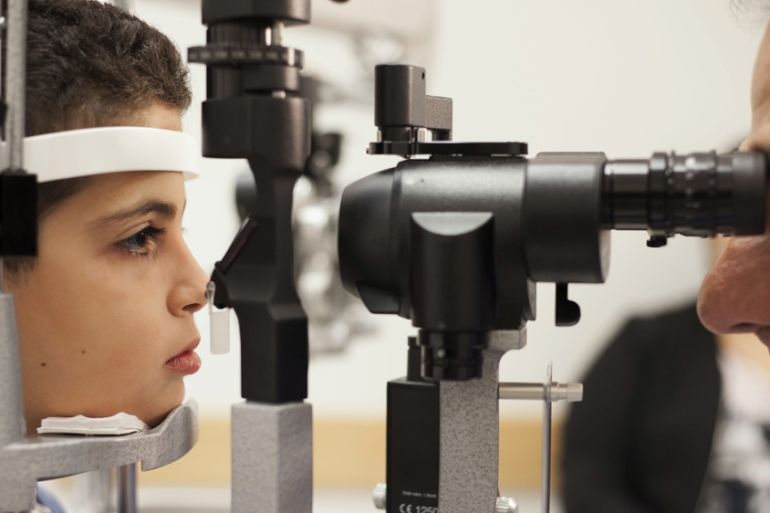WHO: 1 billion people suffer from preventable eye conditions
The first-of-its-kind report claims that over 2.2 billion people globally live with vision impairment or blindness.

At least one billion people have a vision impairment that is yet to be addressed or could have been prevented by simple eye care, according to a new report published by the World Health Organization (WHO) on Tuesday.
The report titled World Report on Vision stated that more than 2.2 billion people globally live with vision impairment or blindness.
Keep reading
list of 4 itemsWoman, seeking loan, wheels corpse into Brazilian bank
UK set to ban tobacco sales for a ‘smoke-free’ generation. Will it work?
Poland lawmakers take steps towards liberalising abortion laws
“It is unacceptable that 65 million people are blind or have impaired sight when their vision could have been corrected overnight with a cataract operation,” WHO Director-General Tedros Adhanom Ghebreyesus said in a statement.
“People who need eye care must be able to receive quality interventions without suffering financial hardship,” he added.
Ghebreyesus said it was important that all countries included eye care as part of their national health coverage plans as they take steps towards implementing universal healthcare coverage.
The leading causes of vision impairment globally were found to be uncorrected refractive errors (124 million) and cataracts (65 million). Other causes include myopia, diabetes and late detection.
Nearly 900 million people suffered from unaddressed presbyopia – an age-related ailment – and glaucoma, it said.
The report was produced after a request from several governments during the 2017 World Health Assembly, Dr Alarcos Cieza, who oversees WHO’s work on vision, told Al Jazeera in an email interview.
Australia, Austria, Ethiopia and Pakistan were among the dozen or so countries that had co-hosted the 2017 event held in Swiss city of Geneva.
‘Not borne equally’
The report claims that the burden of eye conditions and vision impairment across the world was “not borne equally”.
“The burden tends to be greater in low and middle-income countries and underserved populations, such as women, migrants, indigenous peoples, persons with certain kinds of disability, and in rural communities,” the report said.
The report, the first of its kind by WHO, found that people living in low and middle-income regions were four times more susceptible to vision impairment compared with higher-income regions – with rates eight times higher in eastern and western sub-Saharan Africa and South Asia.
According to the report, rates of cataract and trachomatous trichiasis were higher among women, particularly in low and middle-income countries.
“Women may be more susceptible to trachoma than men due to greater contact with children in their role of the primary caretaker of the household,” the report said.
Eye care access
The report said that there was a need to better integrate eye care within national health services across the world, including at the primary health level, for prevention, early detection and treatment.
“Millions of people have severe vision impairment and are not able to participate in society to their fullest because they can’t access rehabilitation services,” Cieza said in the press statement.
“In a world built on the ability to see, eye care services, including rehabilitation, must be provided closer to communities for people to achieve their maximum potential,” she added.
As for the role WHO will play to help improve the ability of countries in providing adequate eye care, Cieza told Al Jazeera that countries have often requested assistance to conduct a situation assessment and develop a strategic and implementation plan.
“We often also provide technical assistance to open eye care centres for children or plan the development of the workforce,” she added.
Giving an example of India, Cieza said that the South Asian nation included cataract surgery in its national healthcare service, leading to “a 50 percent reduction in the number of people with severe vision impairment and blindness” in 10 years.
The costs of the coverage gap globally for refractive errors and cataract left unaddressed was estimated to be $14.3bn, the report said.